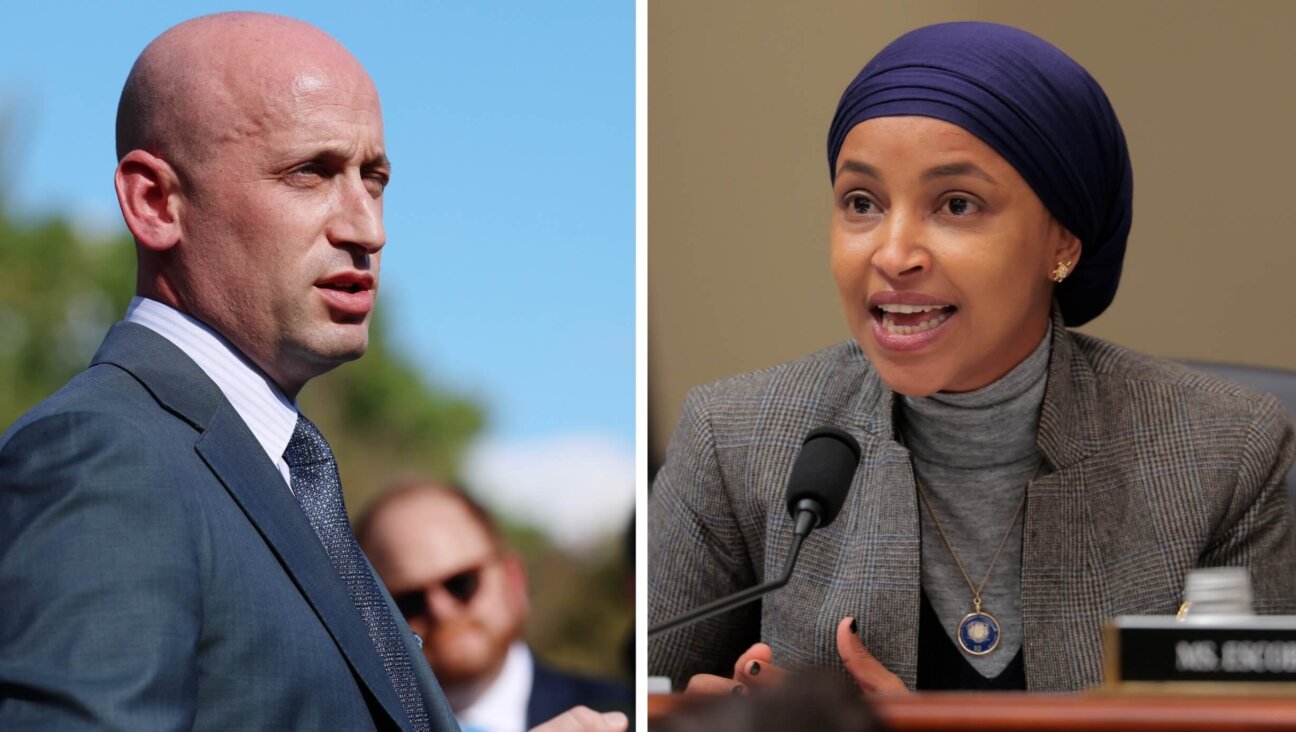Rebel, Rebel: A New Book Plumbs the Life of Chasidic Girls
Mystics, Mavericks and Merrymakers: An Intimate Journey
Among Hasidic Girls
By Stephanie Wellen Levine
New York University Press, 239 pages, $26.95.
* * *|
Alone among the chasidic groups, Lubavitch is always willing to give access to writers who are irresistibly attracted to the idea of reporting on an apparently impenetrable, exotic sect. Most of those writers become captivated by the Lubavitchers’ obvious passion for Judaism, love for Jews and adventurous spirit, and seem entranced by the feeling that they are dealing with holy secrets.
We have yet to see a really critical account of life within the Lubavitch community, and Stephanie Wellen Levine’s “Mystics, Mavericks and Merrymakers: An Intimate Journey Among Hasidic Girls” — while it goes some way — is no exception. Indeed, Levine, herself a secular Jew, goes to great lengths to produce the ultimate insider’s view of the movement’s women, when an outsider’s look may have been more useful.
Levine, a Harvard University doctoral candidate in American studies, spent a year in the Crown Heights, Brooklyn, Lubavitch community following teenage girls at school, in their homes and as they socialized. Her aim was to truly understand their inner worlds.
“Do Lubavitch young women develop independent thoughts, desires, and personal styles within the context of a seemingly all-encompassing Orthodox Judaism?” she writes. “Is there room within Lubavitch for eccentricity? How far can these young women go in thought and behavior before they are considered rebellious? How do Hasidic girls perceive themselves: their idiosyncratic characters, difficulties and gifts?”
Levine quotes from “Reviving Ophelia,” a study released in the mid-1990s that argued that the average American teenage girl loses confidence as she reaches adolescence, suppressing her personality to fit in with her society’s expectations and the desires of teenage boys. “The possibility that [Lubavitch] girls’ lives could be anything other than the Platonic essence of feminine subjugation,” writes Levine, “seemed as unlikely as a suckling pig on a Shabbos table.”
What she claims to have found, in fact, was that Lubavitch girls seemed more well-adjusted than their mainstream peers: more spirited, more outspoken, more honest about their feelings, more self-aware.
Take Dini Rockoff, the daughter of Lubavitch shluchim, or emissaries, in Philadelphia, who lives with her wealthy cousins in Crown Heights. While she is a proud Lubavitcher, completely accepting the religious boundaries of her community, she “exudes power and assertiveness.” A leading student in her class, she nevertheless playfully challenges the authority of her teachers as well as Levine, delighting in asking them awkward questions. She manages to remain enormously popular while rejecting her peers’ interest in clothes and remaining, in her own words, a “tomboy.”
A year after Levine left Crown Heights, she revisited Rockoff, already a married woman with a snood on her head.
There’s also Gittel Kassin, who is determined to study medicine even as she marries and becomes the mother of twin boys, and Estie Gutman, who naturally combines reflections on the life lessons of chasidic philosophy with good parties and evenings out with her friends in Manhattan.
But by far the juiciest parts of the book come when Levine portrays girls who have begun to question their religion. Many of the young defectors she interviewed hang out in one apartment, where they have intense discussions about their beliefs, the secular world, philosophy and literature; mix for the first time with the other gender and occasionally roll a joint. Often, they join a roommate who works as a waitress at a strip club.
Levine’s main subject, Rochel Lehrer, seethes with anger over the role of Lubavitch women, even as she wishes she could remain one: “It would be such a nice dream to say, ‘Yes. It’s perfect. Religion works,’ she says. ‘But it doesn’t.’” This tension between loyalty to her old life and a need to explore plays itself out in all areas: She imagines herself studying Talmud at the Conservative movement’s Jewish Theological Seminary, but she settles for the more acceptable Hunter College. She agrees to a date with a “modern” Lubavitcher, but dismisses him as hopelessly naive and dates a Catholic man instead. Her parents eventually kick her out of the house.
Although such cases tell us that when personal explorations exceed permitted boundaries, young women have to leave the Lubavitch framework, Levine gives the movement credit for much of their drive. The dissenting girls “had a level of faith in their own unique talents that is rare in mainstream America,” she writes. “Their goals had a certain purity that typical Americans tend to lose early on. In short, they exuded passion for themselves and for their unfolding lives.… Self-doubt did plague them at times, but it rarely touched their central, abiding confidence.”
If so, what is behind the assertiveness of these girls? A major factor, according to Levine, is their single-sex world, where they do not have to compete with boys for attention or vie for their affections. In addition, she argues that their tight-knit community and unusually close families give them support and context, and that Lubavitch philosophy, which reveres the soul, encourages introspection.
These naive explanations beg further examination. Every other chasidic sect brings up their girls in similar conditions, with single-sex environments and tight-knit communities. They do not produce such lively, confident girls (and the Tanya, Lubavitch’s central text, is not enough to account for the difference).
Rather, Lubavitch, alone among the chasidic movements, is evangelical, reaching out to unaffiliated Jews around the world to persuade them to observe more of the religious laws. To accomplish this, Lubavitch needs to raise women who are comfortable leading a lonely existence in Bangkok, Anchorage or Salt Lake City. They must not only survive, but be capable of organizing a Passover Seder for 2,000 people, run a day school with no funds and make Lubavitch womanhood seem attractive to secular people. What Levine fails to address is that the movement has a well- thought-out strategy and has deliberately evolved to accommodate these needs. If Lubavitch girls seem more outgoing and lively than their peers, it is because at some point, someone at the top — undoubtedly a man — decided they needed to be.
Indeed, their assertiveness is all harnessed in one direction: figuring out who they are as Lubavitch wives and mothers, and not simply as women, period. Lubavitch is still a male-dominated culture and, as Levine acknowledges, their assertiveness must fit into particular strictures. It would have been useful had she interviewed some of the men in the movement, particularly the decision-makers. What do they think about their strong women? Is this something they tolerate — even encourage — and why?
Levine, however, set out to explore the women’s mode of thinking, and like many writers before her, found it hard to see beyond their horizon. The view from the outside looking in, as well as from the inside out, would have been welcome. Ultimately, Levine convincingly shows Lubavitch girls to be mystics and merrymakers. But she still has a bit deeper to dig to reveal them as mavericks.
Miriam Shaviv is literary editor of The Jerusalem Post.















